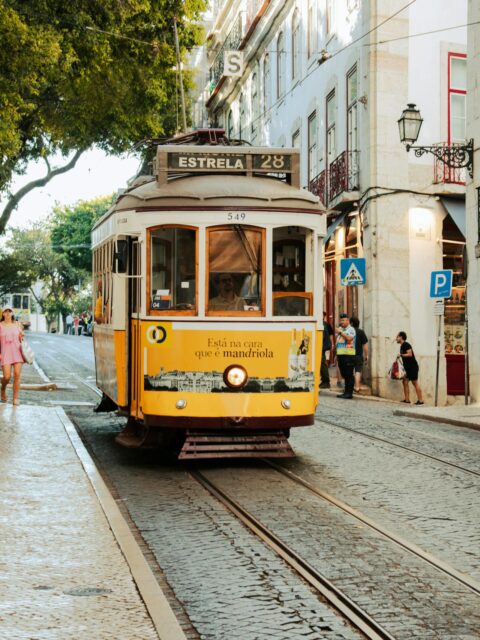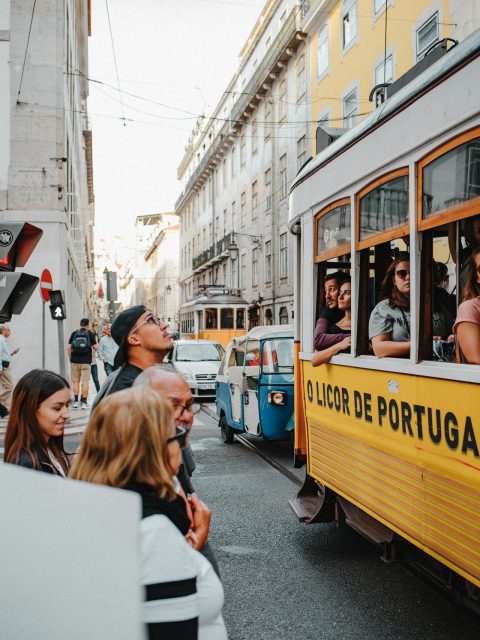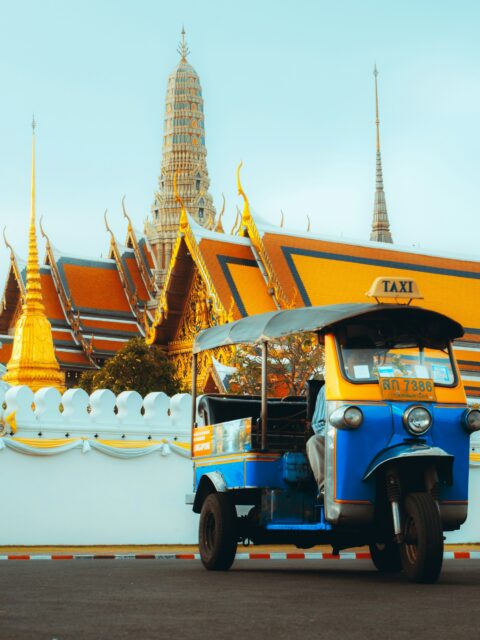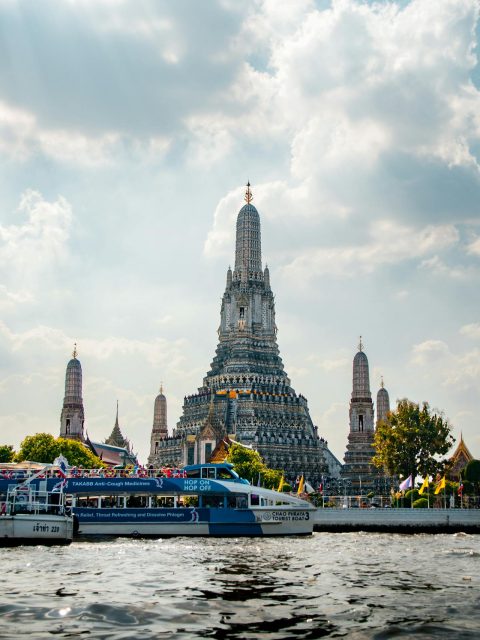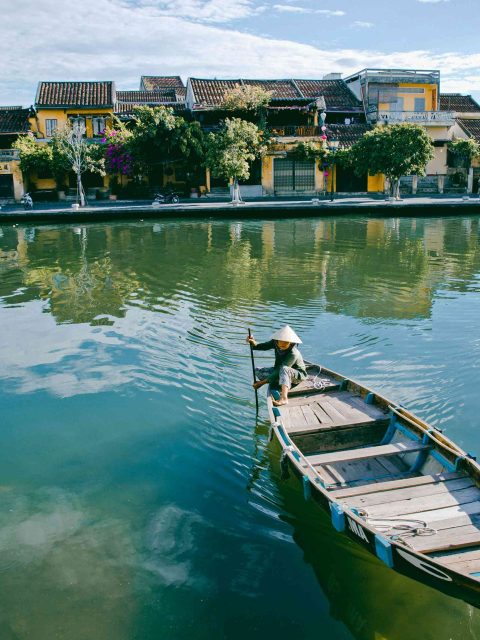10 Must-Visit Places in Kuala Lumpur, Malaysia
Kuala Lumpur, the enchanting capital of Malaysia, is an indispensable destination for those wanting to experience its unique cultural diversity. As a cornerstone of any Kuala Lumpur travel guide, the city boasts skyscrapers like the Petronas Twin Towers, a symbol of architectural progress, and the Batu Caves, a Kuala Lumpur tourist site steeped in history.
Chapters
- What to Do in Kuala Lumpur, Malaysia
- Best Time to Travel to Kuala Lumpur
- Getting Around the City
- Where to Stay in Kuala Lumpur
- Flying to Kuala Lumpur
- Is Kuala Lumpur Safe?
What to Do in Kuala Lumpur, Malaysia
The allure of Kuala Lumpur lies not only in its impressive architecture but also in its rich cuisine, where the flavors of Malay, Indian, and Chinese blend to create a diverse and rich gastronomic experience. Kuala Lumpur is more than just a stopover; it opens up an endless journey of discovery where every street corner and dish tells its own story, uncovering the unique culture and vibrancy of the city.
1. Visit the Batu Caves
Visits to Kuala Lumpur often start at the Batu Caves. Upon entering, you are greeted by the towering statue of Lord Murugan, reaching a height of 140 feet above the ground. The vibrant colors of the statue are not only striking at the entrance but also evoke deep respect. Batu Caves, a sacred site not to be missed in Kuala Lumpur, is renowned as one of the most unique Hindu temples in the world. To avoid the crowds and the sweltering heat, it’s best to visit Batu Caves in the early morning.

Conquering the 272 colorful steps is not only a physical endeavor but also a journey of cultural exploration. Each step unveils a new perspective on the majestic nature and rich culture of the area. The colorful stairs lead to the cave entrance, where a giant statue of Lord Murugan welcomes you.
Inside the cave, you enter a different world filled with temples and religious art pieces. Natural light streaming through the crevices creates a solemn and peaceful space.
Entrance Fee to Batu Caves: Visiting the main temple is free of charge. However, there are two other caves in the area that require an entrance fee.
Located 13km north of Kuala Lumpur’s capital, Batu Caves is easily accessible by commuter train, alighting at KC05 Batu Caves Komuter station. Alternatively, you can use the Grab app from your hotel – a convenient and popular mode of transportation.
Note: As this is a religious site, you should dress modestly. Cover your knees and shoulders to show respect, and if needed, sarongs are available for rent.
2. Thean Hou Temple
Entering Thean Hou Temple, visitors are welcomed by the vibrant red archway, a symbol of luck and prosperity in Chinese culture. This temple, located on Robson Hill, is not only the largest spiritual structure for the Chinese community in Southeast Asia but also offers a magnificent view of Kuala Lumpur.
The architecture of Thean Hou Temple is a delicate blend of Chinese, Thai, and Malaysian styles, creating a unique spiritual space that deeply reflects the culture and traditions. The KL Monorail is a popular mode of transportation for many visitors to the temple from the city center, arriving at the LRT Tun Sambanthan station, which is just a few minutes’ walk to Thean Hou Temple. Using Grab is also an effective option to save time.
The rooftop garden and observation deck are ideal spots for panoramic views of Kuala Lumpur, providing a peaceful and serene escape from the urban bustle.
3. Exploring Chinatown KL
Exploring Chinatown in Kuala Lumpur takes you to Petaling Street, a place buzzing with the vibrant life of a distinctive Chinese neighborhood, especially at night. As the lights come on, this area transforms into a dynamic space, fully embodying the city’s diverse culture and cuisine.
Wandering around Petaling Street, the tantalizing aroma of street food guides you through a culinary journey, from richly flavored sandwiches to warm traditional tea. Particularly, the Petaling Street night market is a vivid tableau featuring a plethora of stalls, where you can find everything from bright lanterns to charming souvenirs.

Don’t miss visiting the Sri Maha Mariamman Temple, which is not only significant spiritually but also houses fascinating architecture and art. Nearby, the Kuan Yin Temple and Chan See Shu Yuen offer architectural marvels, encapsulating peace and deep cultural essence, allowing you to delve into the traditions and spirituality of the Chinese community.
Stop by Merchant’s Lane Café: a serene coffee shop hidden in the hustle of Chinatown, offering a unique experience where local culinary flavors and a relaxing ambiance merge with the colorful culture. This isn’t just a place to enjoy delicious food, but also an opportunity to experience the harmonious blend of past beauty and modern convenience.
4. Merdeka Square
Continuing the journey of discovery in Kuala Lumpur, we cannot overlook Merdeka Square, where the historical and cultural imprints of Malaysia are deeply etched. Located in the city center, the square is not only the site where Malaysia’s declaration of independence was made in 1957 but also a symbol of the blend between tradition and modernity.

Surrounding Merdeka Square are famous architectural works like St. Mary’s Cathedral and the Sultan Abdul Samad building. Here, sporting events, outdoor concerts, and the annual Merdeka parade breathe life and energy into the square, testament to Kuala Lumpur’s vibrancy and ongoing development.

Stopping at Merdeka Square, visitors can admire the towering flagpole – one of the world’s tallest – and feel the pride and spirit of independence of the nation. Despite its calm and simple appearance, the square indeed holds rich stories, symbolizing the flow of Malaysian history and culture.
5. Masjid Wilayah Mosque
The architecture of the Masjid Wilayah Mosque is a harmonious blend of the distinctive characteristics of Turkish architecture, the rustic charm of Malaysia, and the grandeur of ancient Mughal design, creating a piece of art rich in aesthetic value. From the entrance, elaborate floral and geometric patterns welcome visitors, opening up a space that is both sacred and refined, as if stepping into the heart of a living artwork. With its symmetrical architecture, central dome, and towering minarets, these are harmoniously colored in emerald green marble that sparkles in the sunlight, completed with delicate gold trim.
The mosque is open not only to Muslims but also to visitors from around the world. Women are required to wear modest clothing and can use robes provided by the mosque. Masjid Wilayah, also known as the Wilayah Mosque, with a capacity of up to 17,000 people at a time, serves as a bustling community hub.
The vast and airy space allows visitors to partake in free guided tours lasting 45 minutes, offering deeper insights into the traditions and history of this mosque.
6. Islamic Arts Museum Malaysia
Leaving the serenity and sanctity of the Masjid Wilayah Mosque, the next step in our cultural exploration of Kuala Lumpur takes us to the Islamic Arts Museum Malaysia. This place is not only renowned as a leading center of Islamic art in Asia but also as a meeting point for artworks and artifacts from various Islamic cultures, with over 7,000 items on display.
7. Perdana Botanical Gardens
Spanning 90 acres, the Perdana Botanical Gardens emerge as a verdant oasis amidst the bustling urban environment, offering a lively natural space. Here, each garden area, from the Orchid Garden and Cotton Garden to the Herb Garden and Fernery, serves as a testament to the richness of the plant kingdom, highlighting the unique beauty of nature.
Though less mentioned compared to other spots in Kuala Lumpur, the Perdana Botanical Gardens provide a tranquil and green retreat, making for an interesting stop in the city’s dynamic life. This place is ideal for those seeking a quiet space to relax, immerse in nature, and enjoy peace. An hour’s walk in the park opens up opportunities to discover the diversity of flora and fauna, including observing species of deer and birds.
8. Visiting the Menara Kuala Lumpur Tower
Located at Jalan Puncak, near Jalan P. Ramlee, the Menara Kuala Lumpur (KL Tower) is not only an architectural symbol of Malaysia but also an essential viewing spot for any visitor. Ranking seventh among the world’s tallest observation towers, the KL Tower, with its antenna reaching a height of 421 meters, offers a spectacular panoramic view of the entire city of Kuala Lumpur.
The observation deck of the tower, situated at an elevation of 276 meters above ground level, is the ideal place to behold the cityscape in all directions. Not only can you clearly see towering structures like the Petronas Twin Towers, but you can also gaze out over the more distant suburban areas.
The Sky Deck, part of the observation facilities, opens up to an outdoor area, bringing a sense of adventure and freedom. At the peak of the KL Tower, a revolving restaurant provides a unique dining experience, although many visitors choose to eat elsewhere as they continue their exploration.
The Menara Kuala Lumpur Tower operates from 9 AM to 10 PM, allowing you to visit at your convenience; however, it is recommended to come at sunset to witness the golden light accentuating the beauty of the city.
9. Walking through KL Forest Eco Park
The KL Forest Eco Park, nestled in the heart of Kuala Lumpur, is often referred to as the “green lung” of the city. This park is not only the oldest permanent forest reserve in Malaysia but also the most prominent green space amidst the bustling city center. It offers a vibrant natural escape where visitors can break away from the urban noise to enjoy peace and immerse themselves in the beauty of the natural surroundings.

Stepping into KL Forest Eco Park, visitors immediately notice a change in the atmosphere, from the bustling urban noise to the quiet, clean air of nature. Canopy walkways and trails weave through the forest, allowing guests to explore and appreciate the untouched beauty of a tropical forest right in the middle of the city.
Starting your journey from the Menara Kuala Lumpur to take in the city’s panorama from above and then visiting the KL Forest Eco Park is an excellent choice. This not only allows you to enjoy the beauty of Kuala Lumpur from various perspectives but also helps you relax and rejuvenate in a serene, green space.
10. The Petronas Twin Towers
Visiting Kuala Lumpur, one cannot miss the Petronas Twin Towers, one of the city’s most iconic landmarks. Standing at the foot of the 451.9-meter-tall towers, you can feel the grandeur and pride of this architectural marvel. By day, the glass facade of the towers reflects the sunlight, highlighting their unique design and modernity. At night, the lights from the towers create a prominent and radiant image, making them a striking feature of Kuala Lumpur’s cityscape.
Visiting the Petronas Twin Towers, guests not only admire the impressive architecture but also have the chance to explore the luxurious and modern interior. Suria KLCC, an upscale shopping center located at the base of the towers, offers a premium shopping experience with a host of international brands.
More than that, from the Skybridge on the 41st and 42nd floors, you can enjoy a panoramic view of the city. Don’t forget to reach the observation deck on the 86th floor, which offers a top-of-the-world view, with Kuala Lumpur lying within your gaze.

Strolling through KLCC Park
Taking a stroll in KLCC Park, right beneath the towers, is an essential experience. This park is a cool green space with winding trails, a large water body, and a picnic area, creating a natural tableau in the heart of the bustling city. On weekends, the park comes alive with both tourists and locals but maintains its tranquility, making it an ideal place to relax.
In the evening, be sure not to miss the Symphony Lake Water Show at KLCC Park. This is one of the most wonderful experiences you can have in Kuala Lumpur at night. Lights and music blend to create a joyful and warm atmosphere, reflecting the beauty of the Petronas Towers above.

Best Time to Travel to Kuala Lumpur
Kuala Lumpur, with its humid tropical climate, offers visitors the opportunity to explore the city all year round. Below is a detailed guide for each season to help you plan your trip:
- December to February: This is the dry season, with cool and comfortable weather, suitable for outdoor activities and visiting famous sites. However, it is also the peak tourist season, so service prices may be higher.
- May to August: This period still falls within the dry season with warm weather and little rain, making it an ideal choice for those who want to avoid the crowds of the peak season and enjoy the city’s vibrant life.
- September to November: The rainy season begins, with more frequent rain but not so much as to hinder tourist activities. This is an ideal time for those seeking lower service prices and wanting to experience Kuala Lumpur in a more peaceful setting, away from the hustle and bustle.
When planning your trip, consider factors such as weather, tourist density, and service costs to choose the most suitable time for your visit to Kuala Lumpur.
Getting Around the City
To get around Kuala Lumpur, Grab is the most popular and preferred means of transportation in Malaysia. This app is not only user-friendly but also often offers more affordable rates than traditional taxis. Be cautious with taxi drivers in Kuala Lumpur, as they can sometimes be troublesome, especially around the airport area, where they are often reluctant to use the meter and may take longer routes to achieve the fare they desire.
Where to Stay in Kuala Lumpur
For first-time visitors to Kuala Lumpur, the hustle and bustle of Bukit Bintang, the city’s premier commercial district brimming with shops, restaurants, and night-time entertainment, is sure to captivate you. If you’re looking for conveniently located and comfortable accommodations, Bukit Bintang is an excellent choice. Alternatively, Chinatown, with its traditional atmosphere and street food bustle, not only offers hotels at reasonable prices but also allows you to indulge in the distinctive flavors of Malaysia right in the heart of the city.
- Kuala Lumpur best hotels: Mandarin Oriental, The St. Regis, Banyan Tree Kuala Lumpur
- Mid-range: Hotel Stripes, Alila Bangsar, The Chow Kit, Traders Hotel
- Budget: Hilton Garden Inn Kuala Lumpur South
Flying to Kuala Lumpur
To get to Kuala Lumpur, you can fly into one of two international airports: the older KLIA1 or the newer KLIA2. Make sure to check with your airline for the correct destination airport.
From the airport to the city center, visitors have several options:
- Taxi or Grab: This is the most convenient but also the most expensive mode of transportation, costing around 100 RM (22 USD) and taking 40-60 minutes depending on traffic.
- KLIA Ekspres Train: The fastest means of transport at a cost of 55 RM (approximately 12 USD) for a one-way ticket, taking only 30 minutes to reach KL Sentral, the city’s main transportation hub.
- Private Car Service: Avoid waiting in line for a taxi at the airport by booking a private car in advance. This service offers comfort and convenience with prices comparable to Grab.
- Bus: From KLIA2, there is the Skybus service priced at 15 RM (about 3.5 USD), with a travel time of about 45 minutes to KL Sentral.
Is Kuala Lumpur Safe?
Kuala Lumpur is broadly recognized as a safe destination for travelers, consistently ranking as one of the most popular cities in Asia to visit. It holds the 35th spot on the EIU Safe Cities Index, with commendable scores particularly in personal security aspects.
While Kuala Lumpur is generally safe, visitors should be aware of minor crimes such as theft and pickpocketing which are, unfortunately, common urban occurrences worldwide. Travelers are advised to stay vigilant against petty theft, identity theft, and typical street scams that are prevalent in many major cities.




















